Scott Hamilton – 10 May, 2019
Tarrant's text looks forward, to the Balkanisation of multi-racial America, and the violent creation of a pigmentopia. He dreams of a united Europe waging a new crusade against Islam. But the terrorist also gazes backward, toward a nineteenth century Australasia where white settlers justified their presence and power in unashamedly racial language. This history is real. It was, and is, ours.
Auckland
Ancient Worlds gallery; Pacific Masterpieces gallery.
Long-term exhibits
Over the last couple of months New Zealanders have become experts on white supremacists. But it seems to me that, the more we know about white supremacists like the Christchurch terrorist, the less we understand white supremacism.
Since March the fifteenth our media and politicians have told us a great deal about white supremacists. We have learned that they are mostly young men, that they lack social skills and girlfriends, that they like to dress in khaki, rant on 8chan, shoot guns.
White supremacist terrorists have been presented, in our public discourse, as both pathetic and terrifying. They seem to inhabit the edges of society, shunned by the rest of us. Their rage at migrants and minorities is an index of their failings and resentment. They are, as our Prime Minister says, ‘not us’. The portrait we have of Brenton Tarrant and other white supremacist terrorists is undoubtedly accurate. But by equating white supremacism with Tarrant, and by understanding it as something distant from mainstream society, we have insulated that society from scrutiny and criticism.
The Chief Censor has banned Tarrant’s manifesto. He worries the text might provoke copycat attacks by other angry, inadequate young men. The censor’s fears are understandable. But I can’t help wondering whether there are other, subconscious motives for repressing the manifesto.
Tarrant’s text looks forward, to the Balkanisation of multi-racial America, and the violent creation of a pigmentopia. He dreams of a united Europe waging a new crusade against Islam. But the terrorist also gazes backward, toward a nineteenth century Australasia where white settlers justified their presence and power in unashamedly racial language. This history is real. It was, and is, ours.
When Tarrant calls Australia, and by implication New Zealand, a ‘finger on the hand of Europe’, he speaks the language of New Zealand’s nineteenth and early twentieth century leaders. When he talks of the sacred destiny of white people, he recalls the British Israelism of William Massey, who was Prime Minister of our country for almost thirteen years.
A few days after the atrocity in Christchurch I was at Auckland’s War Memorial Museum. I’d been visiting the museum intermittently, on behalf of a publisher interested in its old manuscripts and photographs. Auckland’s museum is full of artefacts, but it is also, itself, an artefact. Like all artefacts, it can tell us about its makers.
Museums are miniaturised empires. Just as the British Museum was stuffed with objects from a burgeoning empire, so Auckland’s museum, in the nineteenth century, hoarded the booty missionaries and colonial administrators brought back from tropical islands.
Museums show off the power of empires, but they also present dangers for imperialists. The diversity and strangeness of their artefacts hint at other ways of living, and thinking. Objects dug from Egyptian sand or Sumerian mud warn of the transience of power, and the fate of all empires.
In 1817 a young poet stood in the British Museum, looked at a chipped statue of Ramses II, who was once the god-king of Egypt, and pondered the fragility of his own society. Shelley’s poem ‘Ozymandias’ imagines the vainglorious words of an ancient dictator, preserved on a fragment of stone amidst a merciless desert:
[O]n the pedestal, these words appear:
My name is Ozymandias, King of Kings;
Look on my Works, ye Mighty, and despair!
Nothing beside remains. Round the decay
Of that colossal Wreck, boundless and bare
The lone and level sands stretch far away.
The imperialists who established museums tried to control the objects they had gathered with a mixture of taxonomy and teleology. They labelled and numbered carved gods, spears, masks, and millions of other stolen treasures, and they arranged these objects to tell a reassuring story. Like its sister institution in London, Auckland museum told its visitors a story of progress, from one stage of human development to the next. The museum’s Pacific carvings, weapons, shell money, and masks were presented as the human equivalents of its fossilised ammonites and trilobites: as fascinating relics from an early era of evolution.
Sometimes the museum’s artefacts were supposed to show cultural decline. In a 1933 lecture, the institution’s self-trained ethnologist, Gilbert Archey, argued that the Maori and Papuan carvings in his collection showed a ‘degeneration’, as artists went from portraying the human figure realistically to giving it a ‘distorted rendering’ full of decadent ‘decorative patterns’.
The Maori Renaissance saw iwi reassert their rights to the taonga that had been taken from them. A new generation of scholars reversed the judgments of Archey, and proclaimed the ‘primitive’ artefacts of the Pacific masterpieces of world art. Kawe, the magnificent carved goddess from the atoll of Nukuoro, was rescued from a cupboard and given the reverence and prominence she deserved.
Today Auckland museum broadcasts the same reassuring message as mainstream Pakeha society. In its latest five year strategic plan, the museum calls itself the ‘kaitiaki’ of Auckland’s taonga, and talks of its ‘partnerships’ with the city’s communities. The colonial era, the museum suggests, is over. Pluralism and respect reign. But whenever I find myself in a little room filled with exquisite objects on the museum’s mezzanine, I begin to wonder whether the past is truly past.
The Ancient Worlds gallery is one of the museum’s smallest. It is filled with a few dozen objects from a series of northern hemisphere societies. There are drained amphorae from Greece and Rome, cryptic painted tablets from Egypt, and a tiny glass bull scooped out of the loam of the Indus Valley. Despite its modest size and peripheral location, this gallery plays a pivotal role in the story that Auckland Museum tells its visitors. The gallery’s signboards make a series of ambitious claims about the nature of history, and about the nature of human beings.
At the entrance a long piece of text tries to distinguish the ‘complex’ societies whose artefacts are displayed in the gallery from other human groups, and attempts to explain the emergence of these distinctive societies.
The text claims that, ‘five or six thousand years ago’, in places where ‘conditions allowed’—Egypt, Sumer, the Indus Valley—’complex’ societies based on sophisticated agricultural techniques like irrigation emerged. These societies were all fundamentally similar. Elites ruled them, appropriating the labour and products of the masses. The elites were expansionist, warring with and colonising neighbours.
When the Ancient Worlds gallery tells its visitors that ‘complex’ societies, with their hierarchies and expansionism, were established where ‘conditions allowed’, it reveals the influence of Jared Diamond‘s Guns, Germs, and Steel, which was published in 1997 and has become one of the biggest selling history books of all time.
Diamond wrote Guns, Germs, and Steel because he recognised that the old imperialist narrative of human history, which emphasised the biological or cultural inferiority of non-European peoples, and justified their colonisation by the more advanced whites, had lost all credibility by the end of the twentieth century.
His book explains the different trajectories of different societies in terms of geography and environment. He argues that all humans are competitive, and that all human groups have a tendency to expand and dominate their neighbours. Europe’s location and climate gave it an advantage over societies, and ensured it would colonise much of the rest of the world. According to Diamond, groups like the Australian Aboriginals and the Papuans would have followed the same trajectory as Europe, but they had been isolated by geography and frustrated by climate.
Diamond‘s been praised for countering racist narratives about history in Guns, Germs, & Steel. Vincent O’Malley, the distinguished historian of New Zealand’s colonial wars, recommended the book to local readers in a 2015 newspaper article. But it seems to me that Diamond extends rather than abolishes the old imperialist account of human history. The old narrative held that Europeans, with their drive to compete, expand, and dominate, were destined to conquer and colonise the world. Now Diamond has universalised the European condition. He sees every human, every society, as competitive, expansionist.
It might seem strange to connect Jared Diamond’s book, which is erudite and engaging, and draws on decades of field research, with Brenton Tarrant’s rambling, demented manifesto. But, as different as they are, Diamond and Tarrant share a view of history as an endless, violent struggle.
Lately, when I leave the Ancient Worlds gallery, I find myself drifting downstairs, into the large dim room where the museum displays scores of artefacts from Melanesia. I think about the way both Diamond and the museum must repress and deny Pacific history, to sustain their vision of humanity.
For decades, Australian archaeologist Tim Denham has been digging in the highlands of Papua. Denham has confirmed what Papuans already knew: that their ancestors have been gardening for millennia. At Kuk Swamp, in the massive Wahgi Valley, he has found drainage ditches almost ten thousand years old.
Melanesians were farming long before Sumerians, Egyptians, and the people of the Indus Valley. In Guns, Germs, and Steel Diamond acknowledges the antiquity of Papuan gardens, but argues that Papuans could never create the sort of ‘civilisation’ associated with other ancient agricultural societies. Papuan societies remained small. Most of them had a few hundred members; the largest had a few thousand.
In Papua and elsewhere in Melanesia, small polities led to linguistic diversity. Today eight million Papuans speak eight hundred and fifty languages today. Vanuatu, which was settled only three thousand years ago by a small group speaking a single language, now boasts one hundred and thirty-eight tongues, even though its population is a mere quarter of a million.
The linguist Alexandre Francois argues that Melanesians practiced a sort of ‘egalitarian mutilingualism’. Instead of building chiefdoms, states, and empires, and imposing their tongues and cultures on their neighbours, they placed a positive value on diversity. In one of his essays, Francois describes the situation in the northern Banks and Torres archipleagos of Vanuatu, where a few thousand people speak at least a dozen languages:
These small-scale societies are egalitarian…the relationship between local communities is one of mutual respect and peaceful alliance, with virtually no relationship of dominance or prestige of one community over others. This egalitarianism between social groups is mirrored in the balance of power between languages…no local community would undergo the pressure to align its language with that of another…
In an essay published last year called ‘Collective Action, Mutual Aid, and Wetlands Agriculture in the Highlands of Papua New Guinea’, Tim Denham criticises Jared Diamond for ‘eternalising the present’ by assuming that Papuans and other non-Western peoples share the competitive ethos common in capitalist societies. Denham scoffs at Diamond’s claim that isolation and a lack of seed-based crops forestalled the emergence of Papuan chiefdoms and states. He points out that hierarchical, expansionist societies have developed in many isolated places with the same root crops that the Papuans farmed. Isolation and a taro-based economy did not stop Tonga, for example, building a maritime empire in the late Middle Ages.
Denham also notes that, despite their small, decentralised societies, the Papuans succeeded in constructing the sort of large-scale irrigation systems that Diamond, not to mention Auckland museum’s Ancient Worlds gallery, consider signs of ‘civilisation’. Papuans succeeded in digging hundreds of kilometres of ditches and canals, and raising huge earthen walls, without resorting to the slave labour that built Egypt’s pyramids, or Greece’s Acropolis. Denham shows that the small societies of Papua came together on an ad hoc basis, under the leadership of ‘big men’, who owed their positions to popular assent rather than bloodlines or arms, and dug up their valleys and hills, diverting and regulating rivers and streams.
Jared Diamond and Auckland museum argue that all societies have a tendency to hierarchy, expansion, domination. The history of Melanesia disproves such a claim. Its peoples had the ability to take the route of empires like Egypt, Rome, Britain. They chose not to.
Recently I looked at a piece of pottery in the museum’s Pacific Masterpieces gallery, a broad, shallow bowl made on the banks of the Sepik, Papua’s Nile, and decorated with the lachrimyform heads and drowsy eyes of ancestors. I remembered a three-handled jug, covered in portraits of Dionysus, Zeus and Paris, that sat securely upstairs in the Ancient Worlds gallery. Each of these artefacts, the Papuan and the Greek, was beautiful and intricate, but only one had been deemed the product of a ‘complex’ society, a civilisation.
It might seem like the argument I have been making is an esoteric one, that my differences with Jared Diamond are essentially scholarly. But the ideology that Diamond promotes, and the view that all human societies must travel the same road, guides the policies of Western governments and financial institutions in the Pacific.
Reading the reports the International Monetary Fund delivers to small Pacific nations, I find the same beliefs that Diamond champions in Guns, Germs, & Steel. Competition is the natural human condition, so free markets must be established. The expansion of one society into another is natural, so foreign investment should be welcomed.
The peoples of Melanesia chose, and in many cases continue to choose, their own paths through history, rejecting the hierarchies and expansionism of Europe. We should reject Diamond’s teleology, which has its origins in white supremacism. Papuan artefacts belong in Auckland museum’s Ancient Worlds gallery.
Scott Hamilton
Recent Comments
Michael Bowler
Nice piece of work, Scott. But I'm a sucker for anything that references Ozymandias.
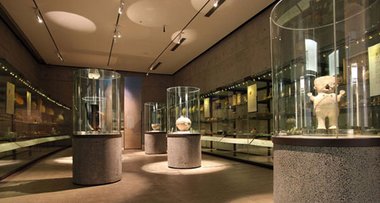
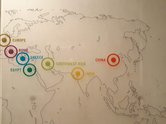
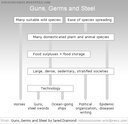


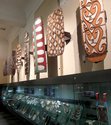

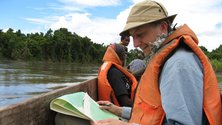

 Advertising in this column
Advertising in this column Two Rooms presents a program of residencies and projects
Two Rooms presents a program of residencies and projects



This Discussion has 1 comment.
Comment
Michael Bowler, 6:42 p.m. 10 May, 2019 #
Nice piece of work, Scott. But I'm a sucker for anything that references Ozymandias.
Participate
Register to Participate.
Sign in
Sign in to an existing account.